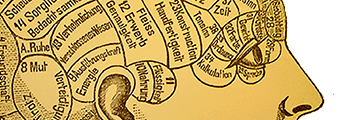Psychoanalysis
Full Title: Psychoanalysis: Topological Perspectives: New Conceptions of Geometry and Space in Freud and Lacan
Author / Editor: Michael Friedman and Samo Tomšič (Editors)
Publisher: Transcript-Verlag, 2017
Review © Metapsychology Vol. 22, No. 40
Reviewer: Diana Soeiro, Ph D.
Topology is a branch of mathematics that formalizes places and shifts without measurements. It became popular during the nineteenth century dealing with aspects of geometrical figures that remain invariant when they are being transformed. In that sense, for example, a circle and an ellipse are topologically considered to be equivalent because both have the ability to transform into each other with no cutting or pasting. (Nobus 2003, 63)
Trained as a forensic psychiatrist, Jacques Lacan (1901-1981) worked as a psychoanalyst and psychiatrist. His philosophical perspective was strongly influenced by post-structuralism that argued for the understanding of man according to a structure (modelled by language) having its own logic, independent of reality or ideas. That logic was non-binary, ie. not based on opposites. During the 1950s his view on what psychoanalysis should be slowly changed and his proposal expanded psychoanalysis’ area of influence to society at large. Lacan strived for re-actualize Freud’s original writings relating it to contemporary philosophy, linguistics, biology, and topology. In his view, psychoanalysis should take full responsibility of its potential and affirm itself as a powerful tool, able to contribute both to a better management of each individual’s life and also to society itself.
During the 1960s/ 1970s several references to topology show up in Lacan’s work but particularly in the last decade (between 1971 and 1981) topology became his main focus, aiming at deepen the relevance of these surfaces for the formulation of a scientific theory of psychoanalysis — through writing and drawing. Having no formal training in mathematics he worked with mathematicians, using recurrently the sphere, the Möbius strip, the torus and the cross-cap to come across his psychoanalytical thinking.
Interdisciplinarity can face many challenges and the intersection of psychoanalysis and mathematics is not easy. An understanding of what is at stake can only arise from a dialogue between both areas of expertise. It is therefore positive that the leading editor of the current volume, Michael Friedman, is a Mathematician and scholar of Philosophy, at the Interdisciplinary Laboratory “Image Knowledge Gestaltung”, Humboldt University in Berlin — having developed his studies in Israel and France. Co-editor Samo Tomšič, from Slovenia, is a Philosopher, working also at the same Laboratory. The volume features a total of eight essays from contributors based in Germany, Belgium, Slovenia and Israel.
We will now make a brief review of the featured topics. Mai Wegener (Psychoanalyst, Berlin) dwells on optical models, the Möbius strip, the distinction between topic and topology, and mathemes. Dominiek Hoens (Philosopher, University of Gent) claims that topology, in Lacan’s work, is the need to visualise the structure within the subject. Mladen Dolar (Psychoanalyst and Philosopher, University of Ljubljana) works on the distinction between a limit and a border, cracks and slips in language, embodied voice, the voice of unconscious, voice and ego, and inner speech. Samo Tomšič addresses the connection between Lacan and Kant, transcendental aesthetics and philosophy of consciousness, Koyré’s influence in Lacan, the Möbius strip, the value of topology, Lacan and his relation with philosophy. Claudia Blümle (Professor of History and Theory of Form, Humboldt University in Berlin), reflects on Lacan’s drawings and topological sketches; schema, model and image. Michael Friedman claims that topology is knowledge that cannot be written, investigates the relation between topology and the concept of identification, and goes in depth on the torus. Renen Amir (Department of Philosophy, Tel-Aviv University) addresses the signified and significator, the conception of the letter, metonymy and metaphor. Rona Cohen (Department of Philosophy, Tel-Aviv University) examines Kant’s influence on Freud’s conception of space, the imaginary body, and the relation between space and body.
Psychoanalysis’ place among sciences of behaviour and mind became convoluted in the last couple of decades. Up until the 1980s, it was all one could hear about and it’s strength in universities’ curricula and within the scope of mental health was powerful. Overtime, it has lost its allure. Briefly, some of the reasons were: lack of results (‘cures’), the emergence of technology associated to mental health, a heavily medicated society culture, too many sub-divisions among psychoanalysts themselves, the lack of a proper scientific corpus, etc. However, the practice continues to exist, new psychoanalysts continue to emerge and many continue to seek psychoanalysis in order to better manage their lives. To sum up, perhaps psychoanalysis has had a more relevant role in the past but it continues to have a role today. Furthermore, as the editors remind us in their Introduction, psychoanalysis affirms itself as a crosscurrent, openly questioning scientific epistemology and also rejecting both the dualism body/ soul and a reductionist approach by neuroscience. What can we learn from it?
There have been several books on Lacan’s topology in the last couple of years and the subject continues to capture one’s imagination. However, more research is needed in order to decode its relevance both to psychoanalytical practice and to how it can strengthen its scientific corpus. The current volume goes beyond a historical curiosity on the history of psychoanalysis and has the potential to be useful to both.
Bibliography
Nobus, Danny (2003). Lacan’s science of the subject: between linguistics and philosophy. In The Cambridge Companion to Lacan (ed Jean-Michel Rabaté), UK: Cambridge University Press, pp.50-68.
© 2018 Diana Soeiro
Diana Soeiro. Philosophy PhD. Research Fellow at Universidade de Lisboa/ University of Lisbon. Updated information: www.linkedin.com/in/DianaSoeiro

